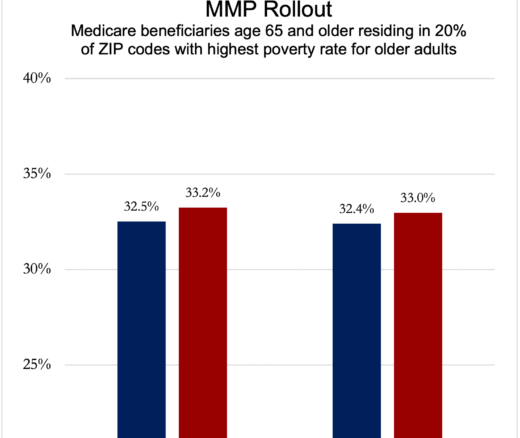
Why You May Have Fewer Health Insurance Choices Than Your Neighbor
Insurers Avoid Counties With Small Populations and Poor Health but a New LDI Study Finds Limited Evidence of Anticompetitive Behavior
Blog Post

In the U.S., safety-net hospitals serve as a critical lifeline for low-income, uninsured, and underinsured populations, often providing the only accessible care in poorly-served urban and rural areas. These hospitals, which vary widely in structure and scope, operate under financial strain due to their high levels of uncompensated care and limited reimbursement for essential but often unprofitable services, such as trauma care and inpatient psychiatric services.
According to LDI Senior Fellow Paula Chatterjee, “safety-net hospitals disproportionately serve populations that face the most significant barriers to health care, but there’s no universally accepted definition” for them. This variability reflects the diverse, community-specific roles these institutions play across the country. She adds, “In some places, safety-net hospitals are large, urban, teaching hospitals, whereas in other places the safety net is comprised of small, rural hospitals that are often the sole sources of care for large swaths of the population.”
Safety-net hospitals increasingly find themselves as acquisition targets for health systems. While acquisition of these hospitals may seem counterintuitive given their financial struggles, safety-net hospitals may represent a unique segment of the market that, when integrated with a larger system, can bring specific strategic value, including access to expanded patient populations and safety-net government subsidies.
To address the limited research on how these acquisitions impact hospital solvency and community health, Chatterjee and her colleagues conducted a first-of-its-kind analysis. They examined 22 safety-net hospital acquisitions between 2016 and 2021 using public data from the Centers for Medicare & Medicaid Services’ Hospital Change of Ownership dataset and the American Hospital Association’s Annual Survey database. Although safety-net hospitals frequently offered essential community services before acquisition, the study found that post-acquisition, several facilities lost services, raising concerns about health equity and access.
In the Q&A below, Chatterjee further explored the study’s implications.
Chatterjee: There’s been a lot of concern about how consolidation in hospital markets might affect the health care safety net, but there’s been limited data to guide us. To our knowledge, this is the first study to comprehensively describe safety-net hospital acquisitions in the United States. We recognize that our study is based on a relatively small sample, but we believe it highlights important patterns worth exploring further.
Chatterjee: In our study, we found that, relative to other hospitals in the same Hospital Referral Region in the year prior to acquisition, acquired safety-net hospitals tended to be smaller and had lower occupancy rates. The acquiring systems were often geographically concentrated, with only six out of 20 systems operating across more than one state. After acquisition, while most hospitals maintained their provision of safety-net services, two of the 22 hospitals lost safety-net services, three ceased inpatient services altogether, and one hospital closed entirely. This variability across the sample raises important questions about the impacts of acquisitions on access to care.
Chatterjee: One surprising aspect was how access to essential safety-net services (which are often unprofitable but vital health care services for low-income populations, such as burn care, trauma care, and inpatient psychiatric care) can be vulnerable in the post-acquisition period. These types of services are core to the mission of safety-net hospitals, but it’s unclear how they align with the financial incentives of acquiring systems. This misalignment may pose a risk to continued access to these critical services.
Chatterjee: Safety-net hospitals rely on a complex patchwork of subsidies from local, state, and federal levels, yet we see evidence that these subsidies aren’t always effectively targeted to the hospitals with the greatest need. Recent policy initiatives are attempting to improve subsidy targeting to ensure these funds consistently reach safety-net hospitals. Moving forward, it will be crucial to monitor the effectiveness of these policy changes to make sure they are supporting the stability of these essential health care providers.
The study, “Acquisitions of Safety-Net Hospitals from 2016–2021: A Case Series,” was published on June 24, 2024 in Health Affairs Scholar. Authors include Christian Wood, Xinwei Chen, William Schpero, and Paula Chatterjee.


Insurers Avoid Counties With Small Populations and Poor Health but a New LDI Study Finds Limited Evidence of Anticompetitive Behavior

A Proven, Low-Risk Treatment Is Backed by Major Studies and Patient Demand, Yet Medicare and Insurers Still Make It Hard To Use

Chart of the Day: Medicare-Medicaid Plans—Created to Streamline Care for Dually Eligible Individuals—Failed to Increase Medicaid Participation in High-Poverty Communities
Research Brief: Shorter Stays in Skilled Nursing Facilities and Less Home Health Didn’t Lead to Worse Outcomes, Pointing to Opportunities for Traditional Medicare

How Threatened Reproductive Rights Pushed More Pennsylvanians Toward Sterilization

Abortion Restrictions Can Backfire, Pushing Families to End Pregnancies